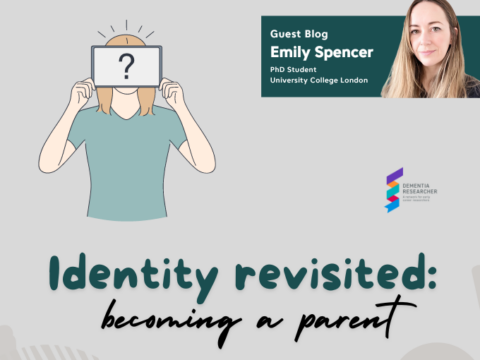I am going to give you the background to this one before I give you the nitty gritty statistics and opinions. I was called by the demon overlord of these blogs and asked to write a piece on ‘how many women it takes to make a professor’. When I pointed out that I’d already covered all the problems in my Ada Lovelace piece on women in science, and that fundamentally I can’t change how people are, I was told that it needed to be about ‘more than sexism’. I pondered this for several days, gave up, pondered some more and then had a long and rambling phone call with said dragon overlord and here we are, ready for some statistics and opinions.
The basic premise of today’s piece is that we’re feeding a ton of women into the sciences these days, especially biological sciences, but they still all disappear mid-career and there needs to be some strategy put in place to either stop them disappearing, or to bring them back.
Let’s start with some numbers. The majority of these came from a long and arduous slog through the AdvanceHE reports from the last twelve years or so. You’re welcome. The good news from these numbers is that we’re creeping up in terms of everything. In 2010 there were a total of 180k academic staff in the UK of which, 18% were female professors. In 2022, there were a total of 224k academic staff, of which 28.5% were female professors. Those of you with your Casio calculators out will have spotted this is pretty much a doubling of actual numbers (about 32k up to 63k). With a little excel wizardry and some math I’m 90% sure is right, this leaves us reaching a 50% male/female ratio in about 2047.
Given that all the climate people and the global population people think we’re going to be overcrowded and on fire by 2047 I’m wondering whether there’s any way of speeding that up a little. And it turns out I’m not alone in wondering that.
There are numerous organizations encouraging women into STEM careers. Many funders now actively support female early career researchers. The aim seems to be preventing the over-leakage of women out of the pipeline by massively saturating said pipeline with women at the start. It’s an interesting approach but I’m not sure how sustainable it is. So are there better approaches to keeping women in science long enough for them to become professors?
As mentioned up top, I spent an actual age pondering this. And then, after some frenetic Googling I found a paper by Mariam Mousa and colleagues in EClinical Medicine which was wonderful and exactly what I needed. The paper was entitled ‘Advancing women in healthcare leadership: A systematic review and meta-synthesis of multi-sector evidence on organisational interventions’. Which sounds horribly complex so I shall summarise with a couple of quotes.
The paper found that ‘research continues to focus on the gaps and the barriers to women’s career progression, rather than on potentially effective strategies to advance women in leadership’. People are bringing us problems, not solutions. They also found that ‘where research has explored strategies in this field, these primarily focus on “fixing” the individual, rather than on addressing the organisational and systemic level challenges’. It’s the women who are broken, not the system.
One of the reasons I was reticent to write this piece was because I highlighted many of these individual problems in my Ada Lovelace article. Women are underconfident, women apply less, women are cited less and funded less and then we go and have troublesome babies and are unproductive. The solution is clearly that women need to just be more confident, put ourselves out there, not have babies and yell about our successes like the men do. But the thing is, this doesn’t work. And the Mousa paper highlights this, specifically saying that barriers to progression were based on organizational and cultural traits, not individual capability. The message being we can yell all we like, nobody will believe us because fundamentally society believes that women are less capable.
So…what do they suggest we do instead?
Fundamental. Cultural. Change.
OK so that’s going to be hard. In her interview with Adam Grant, the CEO of IBM Ginni Rometty said that ‘some of the issues we see today are in companies where their values aren’t that deep. Just like when the wind blows on a tree without deep roots, they sway with the wind.’ Fundamental cultural change needs to happen in institutions with fundamental values and at the moment, higher education seems to be going through a transition period where it doesn’t know whether it’s a business or a place of learning. Without those fundamental values, cultural and institutional change are challenging. And the Mousa paper backs this up, they found that ‘Leadership commitment and accountability were critical in sanctioning and championing these policies and practices, building a positive culture to deliver opportunity and optimise motivation for women’. As we’ve mentioned before, you can’t be what you can’t see.

Women receive 36% of competitive awards in Science from the Wellcome Trust, and in 2019/20 they received only 29% of the grants over £1M. This means that men received £250M in scientific grants compared to women’s £115M
Right. We’re not changing overnight, that’s clear. But do Mousa and colleagues think there’s anything else we can do, or stop doing, to help improve on our 2047 equity date?
First up, stop doing things in isolation. They noted that ‘Isolated short-term initiatives, even when well resourced, can be unsustainable and fail to be embedded within organisations’. There is no point in sending everyone on diversity courses to learn how to be objective if they’re going to be allowed to send anonymous feedback via online forms saying that women are too emotional and cry too much to be in the lab. The culture of the workplace needs to reflect its values by acting when someone shows explicit bias.
Instead of making training videos but not following them up with cultural change, instead of making people change their answers repeatedly until you ‘get’ that Athena SWAN silver award, Mousa and co suggest that institutions need to adopt a multi-faceted approach. They found that there were a range of interventions that can be roughly categorized as: ‘organisational processes, awareness and engagement, mentoring and networking, leadership development and support tools’. In brief, you need to have a positive culture within your institution, you need everyone to be aware of this and then you need to help and support the less advantaged. In this case, women, but more broadly it can be applied to any number of marginalised groups in research. You cannot just have a diversity, equity and inclusion programme with no reporting, you cannot just report with no change based on the data, you cannot just mentor with no broader cultural support.
And the main reason for all of this? A good mix of men and women produces the best research. The Mousa paper points out that ‘Gender inequity in healthcare leadership results in loss of critical skill and experience, low morale, increased costs of sustaining the workforce, and adverse impacts on healthcare and policies affecting women and children’. Kerri Smith, in a recent Nature article, highlighted that health matters affecting predominantly women tend to be underfunded. And it’s fairly obvious why. If your board is eight male professors who have no uterus, they’re probably not going to care that much about endometriosis unless there are eight female professors there to shout at them. In the words of the amazing Michelle Obama ‘no country can ever flourish if it stifles the potential of its women and deprives itself of the contribution of half its citizens’.
But there has to be a reason we’re currently losing at least a quarter of our citizens. One reason may be that research has shown that women tend to be more collaborative and men tend to be more competitive. Perhaps in a system where we are fundamentally bound to ‘compete’ for research funding, women are just not keen to do so. Perhaps if we stuff more women into the pipeline to plug the holes, that competitive aspect of funding may change because there will be more women at the top making the big decisions that need to be made about how we fund research. Perhaps if the competition decreases we might have the time, the resources and the headspace to do some amazing research. Perhaps.

Dr Yvonne Couch
Author
Dr Yvonne Couch is an Alzheimer’s Research UK Fellow at the University of Oxford. Yvonne studies the role of extracellular vesicles and their role in changing the function of the vasculature after stroke, aiming to discover why the prevalence of dementia after stroke is three times higher than the average. It is her passion for problem solving and love of science that drives her, in advancing our knowledge of disease. Yvonne shares her opinions, talks about science and explores different careers topics in her monthly blogs – she does a great job of narrating too.

 Print This Post
Print This Post




